| Types of Wood in Picture Framing
|
 |
| Picture framing industry develops and evolves not only its techniques but the quality and amount of materials that is being used to create beautiful long-lasting products. Time to investigate what is the best type of wood for your project and get creative!
|
| Aspen |
 |
| Aspen wood has a white, soft texture and is considered strong and low flammable wood, which is why it is worldly used for making matches and paper as the material makes it safer to use compared to other woods. Aspen is also used for making saunas, strand boards, bedding and framing.
Its elegant pattern and easy in usage material are the reasons why many framing companies choose aspen as their main component when making moldings. Another reason why many industries use this wood is heat and water resistance. Aspen rarely rots and does not warp, which makes it ideal for a long-lasting usage.
|
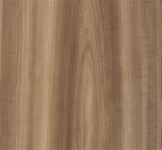
Aspen Wood
|
| Ayous |
 |
| Ayous is also known as abachi, samba or wawa is native to West and Central Africa. Ayous tree has a bright, creamy white to light yellow appearance with indistinct grain. It is sturdy but flexible, making it perfect for framing and interior design usage. Due to its color and material, ayous is used in many different fields, including picture framing, construction, interior decor, beddings, etc.
Fun fact: ayous timber was used in the ceiling of the Paris-Charles de Gaulle airport.
|
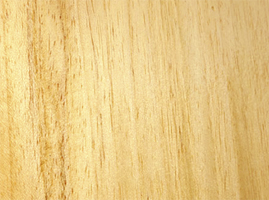
Ayous Wood
|
| Heat-Treated Ayous
|
 |
| When Ayous is treated with heat, hermicellulode with poor thermal stability and water absorption in fibers would be degraded, which improves the dimensional stability of wood. Aside from that, heat treatment is an environmentally friendly method that improves the resistance of ayous, due to the degradation of chemical components.
|
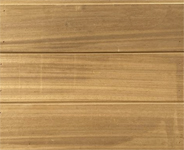
Heat-Treated Ayous Wood
|
| Bloodwood
|
 |
| Bloodwood or Satine is native to South America and has a distinguished red/brown color, which turns into a darker shade overtime due to the exposure to light. However, this can be stopped with the usage of protective finish and avoidance from the direct sunlight.
Bloodwood has a grain that is commonly straight and/or slightly interlocked. Satine has high resistance to most insect attacks and humidity. Its main perk when it comes to woodworking is density. Bloodwood is extremely dense which makes it easier and convenient to work with, as bloodwood is primarily used to build furniture, picture frames, knife handlers, guitars and so much more.
|
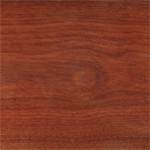
Bloodwood Wood
|
| Cumala |
 |
| Cumala is a tropical tree, found in South America and goes by Red Cumala, Aguanillo, Height Cumala. It can have pink to light brown color and straight grain all across the material. Due to many benefits, such as no odor, absence of toxins and sturdy texture, many farmers implement this tree and produce framing moldings for their customers. It is also largely used in interior design, door frames, decorative veneers and many more.
|
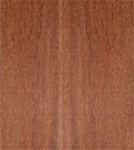
Cumala Wood
|
| Durian |
 |
| Surprisingly enough, the Durian tree is not only known for its delicious fruit, but also used as a woodworking material in many different fields. It is light brown in color with the visible grain, adding a rustic effect in moldings, floors and other items, made out of the durian material. Durian trees are large in diameter and grow up to 165 feet. Durian has a sturdy texture and density, making it ideal for usage in framing, furnishing, flooring and many other fields.
|

Durian Wood
|
| Fir |
 |
| Fir wood comes in many different types, such as Douglas Fir, European Fir, Fraser Fir and many other species. Unlike many other woods, fir is not recommended for outdoor usage, as it does not have insect or decay resistance, therefore mainly used as pulp for the manufacture of plywood and rough timber.
The indoor usage includes drywall and framing, as despite lack of protection, has many benefits for framers all over the world, due to the structure, color and simple usage. If you choose to work with fir outside, note that it will only last for 12-18 months, depending on the humidity and overall climate.
|
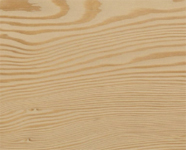
Fir Wood
|
| Jelutong |
 |
| Jelutong originated in Southeast Asia and regions such as Malaysia and Borneo. It has mainly white solar with yellowish/brown darkening and straight, occasionally interlocked grain, which gives Jelutong a rustic effect. Jelutong does not have strong resistance to outside factors, such as insect attacks and decaying process, making it harder to display outdoors.
Due to the low density, Jelutong is easy to work with both using machinery and crafting by hand. Low density allows for easy usage with different finishes, glue, stains and turns. Jelutong is not common in North America, yet if you had a chance to work with it, it is mostly used in framing, carving, and other small productions.
|
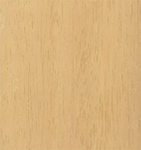
Jelutong Wood
|
| Maple |
 |
| Maple originated in Northeastern North America and has been used by many production fields. Unlike many hardwoods, the sapwood of maple is used more commonly rather than its heartwood. Its color ranges from white to off-white cream color and has a reddish or golden hue and has a straight grain that sometimes can be wavy but even and consistent in texture.
Like many wood species, maple is prone to insect attacks and decaying, which is why it is also not commonly used for outdoor displays. Maple has high density which means it may be a trouble to work with this material, however, it is widely used in flooring, veneer, pulp wood making, musical instruments, frames, baseball bats and many others.
|

Maple Wood
|
| Meranti |
 |
| Meranti wood originated in Southeast Asia and is worldly used in many different occupations. Meranti is commonly used as a plywood material and light structural framing. It has a lot of benefits such as its dulling effect. Due to the quantity of silica in wood, it creates a beautiful effect on woodworking equipment.
It is also known to have resistance to warping and twisting and is highly resistant to humidity and temperature. However, it is important to remember that unlike many other types of wood, Meranti does not have security against decaying and insects, which is why it is not recommended to display outdoors.
|
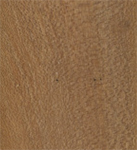
Meranti Wood
|
| Olivewood |
 |
| Olivewood originated in many different regions, such as Europe , Africa and the Middle east and has a lot of historical and religious significance to many cultures. Not only it has a rich history behind, it is also an incredible wood to work with.
The wood itself is hard and strong and has a beautiful yellowish/brown color with an extraordinary grain pattern all across the material. It also tends to get darker and richer as it ages, making olivewood a truly unique material for woodworking and picture framing.
|
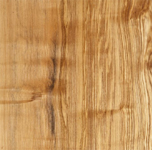
Olivewood Wood
|
| White Ash
|
 |
| White Ash wood originated in easter North America and is widely used all over the globe. It has light brown color and a straight regular grain, similar to Oak. White Ash does not have good resistance to insect attacks and is only slightly durable to decaying.
That is why, if you choose to work with White Ash, keep your projects indoors in order to avoid facing disadvantages of this wood. It is convenient to use in many different fields, including picture framing, millwork, flooring, baseball bats and many more.
|
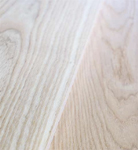
White Ash Wood
|
| Pulai |
 |
| Pulai wood originated in South and Southeast Asia, Pacific Islands and northern Australia. It has light golden brown color and latex canals which appear as slits in the wood. Grain of pulai wood is primarily straight or slightly interlocked, providing wood with natural luster. Pulai is not resistant to decaying, nor insect attacks, making it unusable for outdoor projects. It is also prone to fungal staining if not properly dried.
However, due to its beautiful texture and color, pulai tree is widely used in the process of making picture frames, blackboards, and other smaller items, as it is not strong enough to be used in construction or structural applications.
|
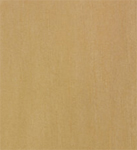
Pulai Wood
|
| Spruce |
 |
| Spruce wood originated in the southeastern United States and has a wonderful reddish brown and yellow/white color with a straight grain, creating a fine texture. Like many other types of wood which was discussed above, Spruce pine does not have strong protection from decaying and insect attacks.
However, many woodworkers and framers choose to work with Spruce, due to its density, visual appearance and simplicity when it comes to working with tools. Many choose to make them in big productions for bridges, beams, poles, railroad ties, plywood, picture frames and other smaller items.
|

Spruce Wood
|
| Jenitri/Quandong
|
 |
| Jenetru or Elaeocarpus angustifolius is a flowering plant that originated in different regions from India to New Caledonia and northern Australia. It is medium in height and has distinguished blue berries, making the tree unique and well-known. It is yellowish brown with a red hue and uneven grain. Usually Jentri is not used in big productions and is commonly used for picture framing, interior decor, and jewelry.
Another type of Jentri is called Quandong and its main difference is red berries. The hardwood has similar texture and color and is also used for smaller projects, such as framing and jewelry work.
|
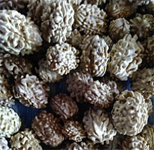
Jenitri/Quandong Wood
|
| Hemlock |
 |
| Hemlock has 10 different species, 4 of which originated in North America and 6 originated in eastern Asia. It has a rich and elegant appearance and reddish-brown color, making it unique and useful for both outdoor and indoor projects. Hemlock wood is considered one of the most popular materials for the picture framing industry. Due to its lightweight and sturdiness, framers all over the globe are choosing hemlock as their most reliable material to work with.
It has great workability and appearance, as well as an affordable price in comparison to other woods. However, hemlock does not have good rot resistance which means that the duration of the brand new appearance will be limited. Hemlock is also rather difficult to identify when choosing a specific kind of hemlock wood which may jeopardize your project if selected incorrectly.
|

Hemlock Wood
|
| Poplar |
 |
| There are over 25 species of poplar wood, located in the northern hemisphere and distributed all around the world. It has light cream to yellowish-brown color and is known for its sturdiness and density, making it ideal for furniture frames, farming, and smaller projects such as wooden toys and paper.
Poplar wood is naturally a strong and stable material, however it loses in comparison with other hardwood. This is why it is recommended to use poplar for medium/small items, in order to keep the material as durable as possible.
|

Poplar Wood
|
| Basswood |
 |
| Basswood originated in the eastern North America but is commonly known in Europe as lime or linden tree. It has pale white to light brown color and a straight grain, creating an even texture. Due to the fact that bassowood has smooth finish, the color does not detract from the carved patterns, making it ideal for painting on the final product. One of the biggest perks of basswood is its affordability, as it is considered to be at the lower range for domestic hardwood.
It is widely used in carvings, musical instruments, picture frames and plywood. However, just like many other species of wood, basswood is not rot resistant, nor insect attack resistant, making it not effective for outdoor projects.
|

Basswood Wood
|
| Pine |
 |
| Pine trees originated in Northern, Central and Eastern Europe and have a variety of different species, all used for similar purposes. Pine tree is considered a softwood, however it does not limit its sturdiness when working with the material. Pine tree is widely used for furnishing, framing, flooring, decking, and even ornamental and food purposes.
It is a #1 choice of many craftsmen as pine is considered to have a lot of benefits such as its lightweight, has fantastic workability and durability and is aesthetically pleasing due to the light colors and closed grain. It is also affordable in comparison to many other species of wood! However, watch out for minor defects and dents when purchasing pine wood materials, and be prepared to give a lot of care and maintenance to your purchase. Make sure to avoid moist environments in order to prevent warping and rotting.
|

Pine Wood
|
| Additional Resources |
 |
| Click here to explore more picture framing materials.
Click here to explore more information about wood painting panels.
Still can't decide which frame to choose? Click here to learn more about wood and metal frames.
|

KeenART Media
|
|
If you have questions about any of our services or products, don't hesitate to contact us. Our knowledgeable staff is always happy to assist with answers, advice, or suggestions.
|
|

|



|
USA Giclee On Canvas, Fine Art Printing - Art Scanning & Reproductions - Handmade Oil Paintings - Custom Wood Panels, Metal Picture Framing - Block/Plaque Mountings, Large Format Dry Mounting & Lamination - Art Supplies: Stretcher Bars, Cradled Wood Panels and Artist Canvas - Collages On Canvas - Plexi/Acrylic Face Mounts - Block Acrylics, Fabric Printing, Dye Sublimation - Cityscape Skyline Prints, Resin, Photo Gifts and more...
|
|
© 2002-2025 - KeenART Media Ltd.
|
|
| |
|
